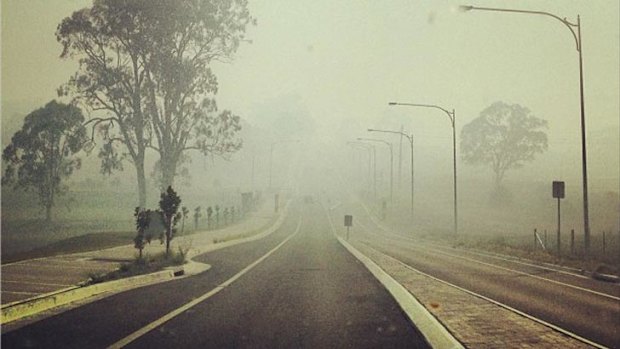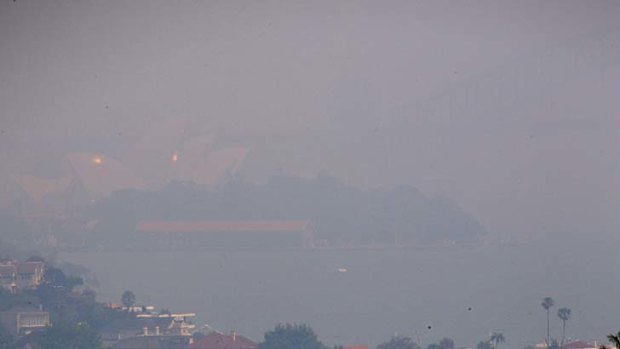By Lucy Carroll and Peter Hannam
Health authorities are bracing for an increase in hospital admissions and sickness as Sydney's air quality drops to levels not seen since the Red Dawn dust storms four years ago.
Smoke from the state's bushfires pushed pollution up to the 2009 levels, which triggered a 20 per cent jump in hospital visits for asthma and respiratory diseases.
"The levels of [pollutants] are very, very high," said Matthew Riley, director of climate and atmospheric science at the NSW Office of Environment and Heritage. "They're among the highest levels we've recorded.''
On Monday residents in the Sydney region were hit with air quality levels up to 50 times worse than normal, as swirling winds sent pollution levels soaring from the central coast to the Illawarra.

Smoke this morning in Elderslie near Camden.Credit: @scottedougherty via Instagram
NSW Health warned Sydney residents that the smoke could be deadly.
"Smoke can kill. We know that during high air pollution days there is an increase in people attending hospitals, getting sick with breathing difficulties but also people dying with cardiovascular disease, '' said Wayne Smith, the director of the environmental health branch at NSW Health. ''Air pollution is going to become very poor over the Sydney basin over the coming days.''
He said asthma sufferers, young children, people with cardiovascular disease and the elderly should stay indoors and not open windows while smoke was visible.
Even those who are otherwise fit and healthy could be adversely affected by high pollution levels, he said.

Heavy smoke blankets Sydney after the last few days of fires.Credit: Peter Rae
"When you can see or smell the smoke you shouldn't jog or exercise outside."
Places in the city's south, such as Campbelltown, reported pollution readings on Monday as high as 2500 on the Air Quality Index, compared with a typical reading of about 50 for Sydney, according to monitoring by the NSW Office of Environment and Heritage. Above 100 is considered poor air quality.
Randwick, in Sydney's eastern suburbs,
and Chullora to the south were showing readings of about 500.
Of special concern are the high readings of particulates, which are running at roughly twice the national standard.
"They are very small particles that penetrate deep into your lungs and can actually enter your cardiovascular system," Mr Riley said.
Michele Goldman, the chief executive of the Asthma Foundation NSW, said asthma sufferers should be especially vigilant.
''The most important thing is always to have reliever medication on hand and make sure they are taking medication regularly. People should also try and use recycled airconditioning in their cars.''
People at serious risk during high pollution days were those with chronic lung disease such as emphysema, said Fay Johnston, a GP and researcher with the Menzies Research Institute Tasmania.
''Studies show that on high pollution days - when bushfire smoke is high - there is a 5 per cent increase in premature deaths. Hospitalisations for lung disease can rise by up to 15 per cent.''
Residents may have to put up with such poor conditions for some time yet, at least until the fires die down or weather patterns shift.
"It's not until we see a significant change in the weather that we would see air quality levels return to the levels we're used to seeing," Mr Riley said.